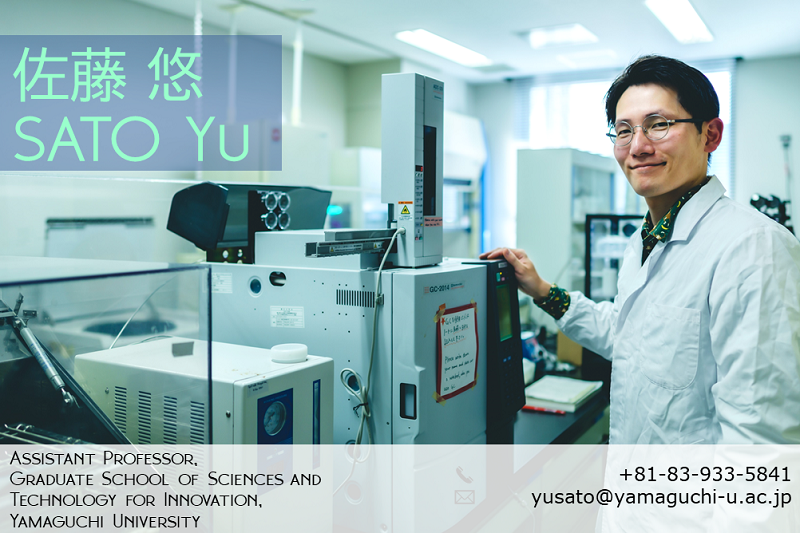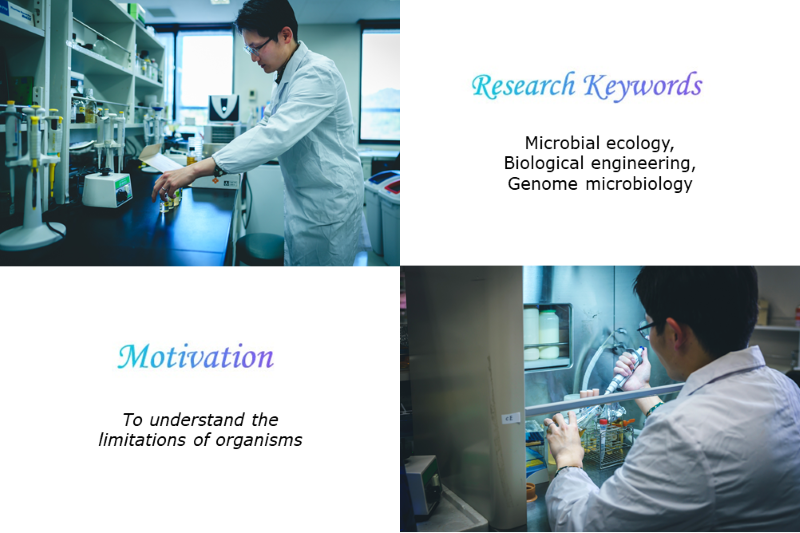

- Sato Y, Okano K, Kimura H, Honda K, "TEMPURA: Database of Growth TEMPeratures of Usual and RAre Prokaryotes", Microbes and Environments, 35(3), ME20074 (2020). DOI
- Sato Y, Kimura H, "Temperature-dependent expression of different guanine-plus-cytosine content 16S rRNA genes in Haloarcula strains of the class Halobacteria", Antonie van Leeuwenhoek, 112(2), 187-201 (2019). DOI
- Sato Y, Fujiwara T, Kimura H, "Expression and Function of Different Guanine-Plus-Cytosine Content 16S rRNA Genes in Haloarcula hispanica at Different Temperatures", Frontiers in Microbiology, 8, 482 (2017). DOI
To view a more comprehensive list of publications, please click on the "researchmap" link below.
Born in Hyogo, Dr. Sato graduated from the Faculty of Science at Shizuoka University in 2013, and acquired a doctoral degree from the Graduate School of Science and Technology at the same university in 2018. Thereafter, he worked as a project researcher at the Graduate School of Engineering at Osaka University in 2018, and then at the International Center for Biotechnology at the same university in 2019. He then held a Research Fellowship for Young Scientists at the Japan Society for the Promotion of Science in 2020, and moved to his current post in 2022.
Since the human genome was first analyzed in the 2000s, the nature of biological study has significantly changed, leading to the establishment of so-called bioinformatics. The methodology where all biological information, including the genome, is quantified and analyzed has brought a major change in the world of microbiology. Dr. Sato would like to use such innovative methodology to conduct research about the temperature ranges where microbes prefer adapting to, and compile a database combing their genetic information. If we could develop and utilize such a database to search for microbes and develop tools to create new useful microbes, it would lead to an expansion of microbial resources. Furthermore, in the midst of the various environmental changes being caused by global warming, it would also contribute to the utilization of stable microbial resources.

 Home
Home




